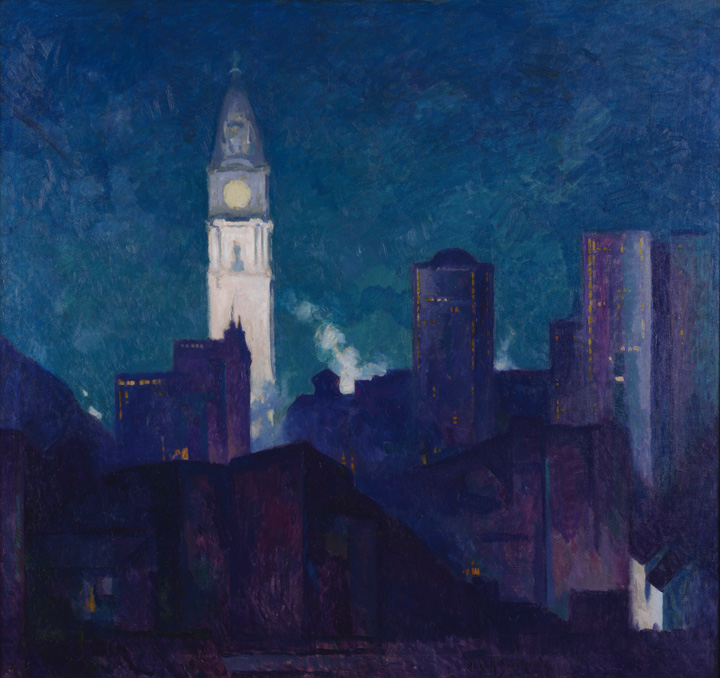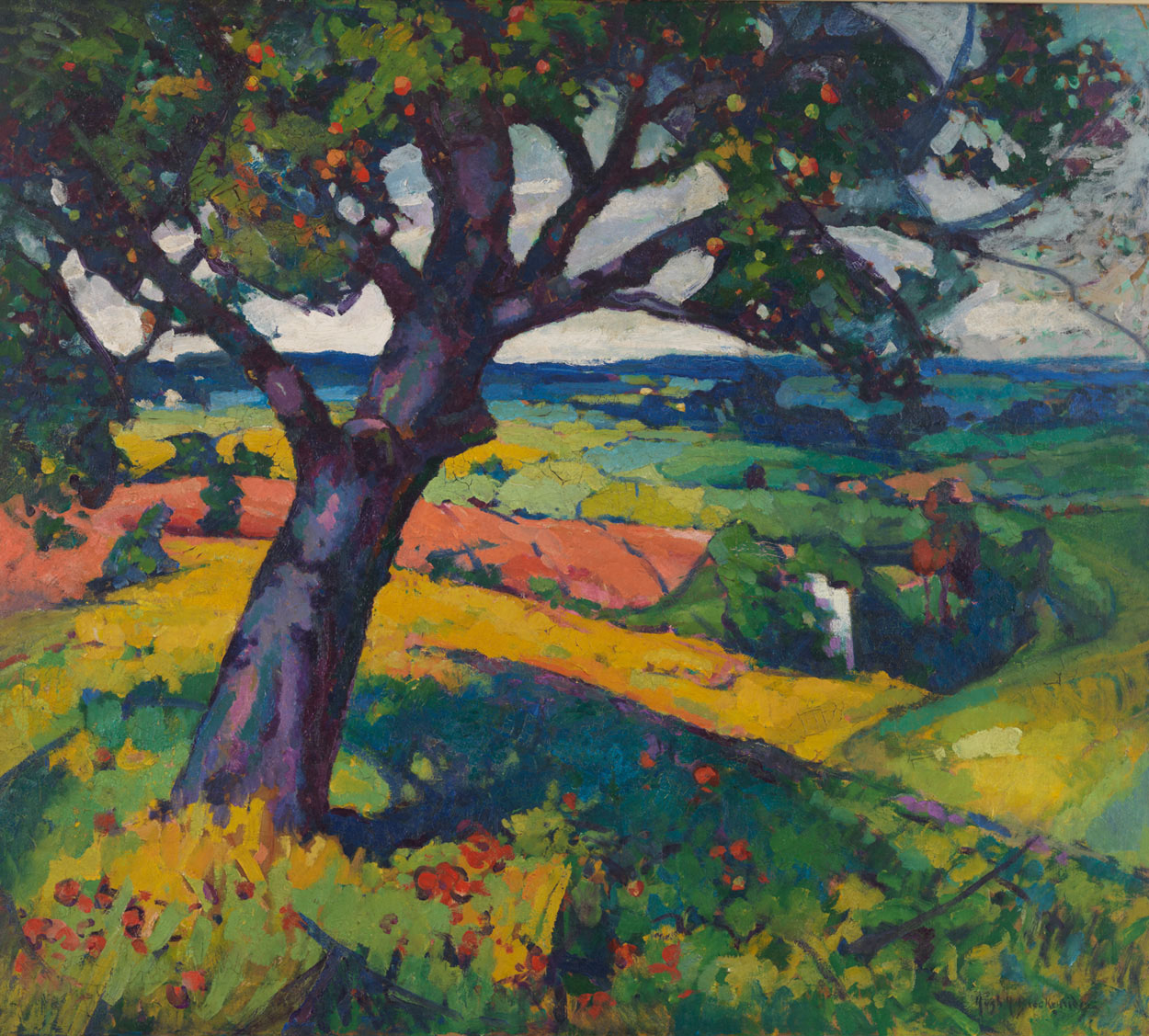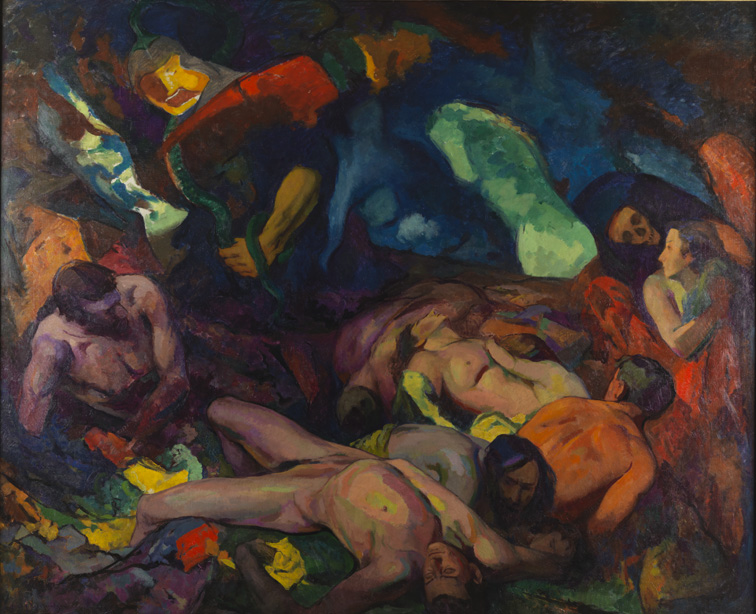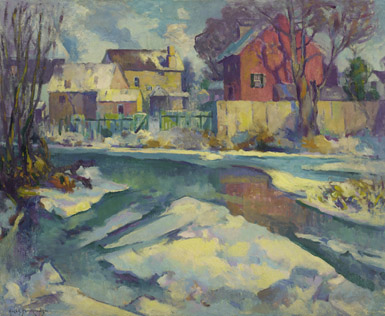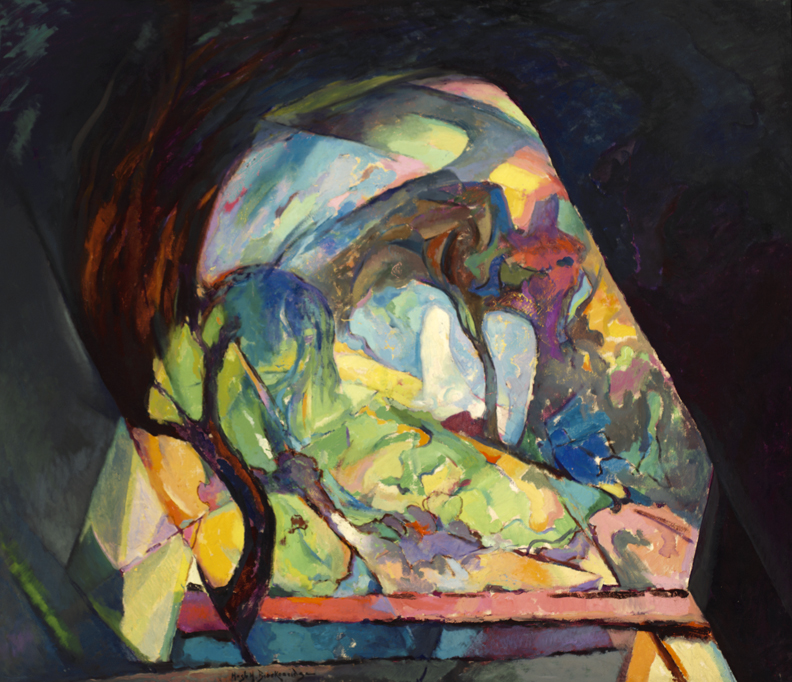
The Tree of Life
Hugh Henry Breckenridge
Breckenridge's varied body of work is exemplary of the dilemma many artists face. A skillful academic realist painter, Breckenridge saw his many portrait commissions merely as a way of making money. His personal work grew increasingly bold and expressive, particularly in the 1920s, until his engagement with light, mood, and intense color brought him to pure abstraction. "Tree of Life" shows Breckenridge's departure from his earlier Impressionist and Pointillist technique and pastel palette, composing instead with vivid color an understanding of Cézanne's analysis of form. Structured as if one were looking out from the mouth of a cave into a paradise of light and color, the work relates to other allegorical tree images Breckenridge painted in this period, including a series of studies in which his experimental impulses are particularly energetic and vivid.
Breckenridge began his long association with the Pennsylvania Academy at age seventeen, when he finally overcame his family's objections to his art studies. Within a short time of his 1893 return from European training (made possible by winning the Academy's prestigious Cresson Travel Scholarship), Breckenridge was offered a position at the Academy, serving as a dedicated painting instructor for more than forty years. Along with Henry McCarter and the younger artist Arthur B. Carles, Breckenridge was one of three Academy instructors who brought a modernist spirit to the school in the early twentieth century.
Artist
Date of Birth
(1870-1937)
Date
by 1929
Medium
Oil on canvas
Dimensions
37 x 43 in. (94.0 x 109.2 cm.)
Accession #
1934.14
Credit Line
Gift of the Fellowship of the Pennsylvania Academy
Copyright
© artist or artist's estate
Category
Subject
We're so excited you're planning to visit PAFA!
Make time for art — visit us Thursday to Sunday.
Before reserving your tickets, please review helpful information about museum hours, accessibility, building access, and special admission programs.
If you have any questions, feel free to reach out to us at visitorservices@pafa.org — we’d love to help!
